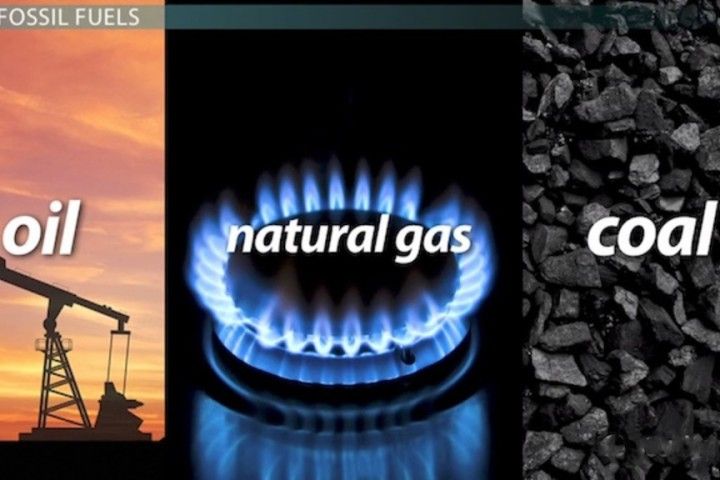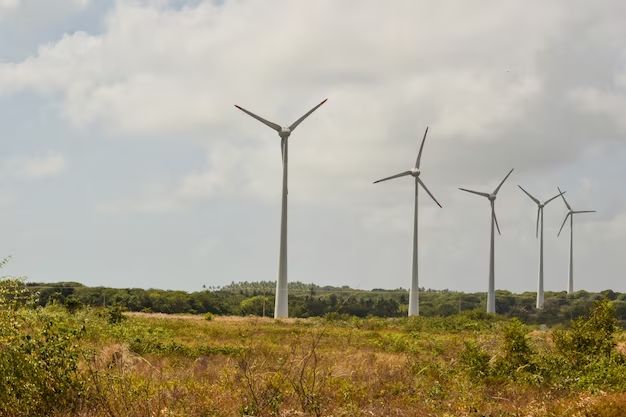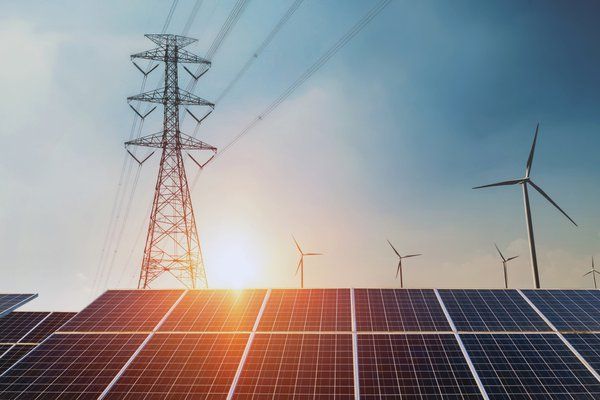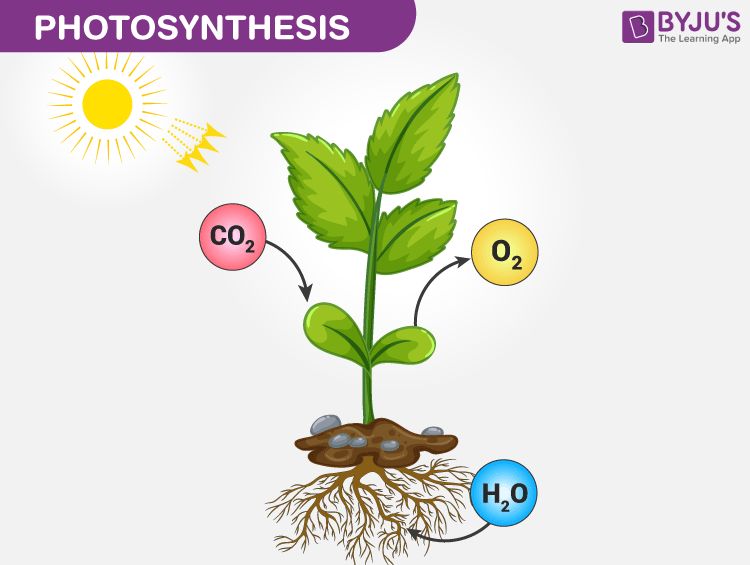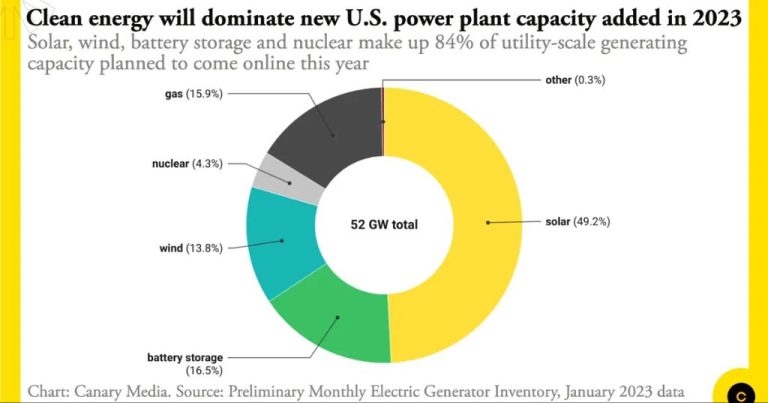How Can I Provide Electricity To My Home?
Rising energy costs and a desire for energy self-sufficiency have led many homeowners to consider generating their own electricity. With advancements in renewable energy technology, it is becoming increasingly feasible and affordable for homes to meet some or all of their own power needs. This guide covers the main options available for producing electricity at home, factors to consider when evaluating each one, and methods to compare costs and incentives.
Many homeowners want to break free from the grid, gain energy independence and pay a lower electric bill. New technologies now enable self-generated electricity that is clean, renewable and cost-effective over the long run. Government incentives can also help defray the upfront price of installing a home electricity system. This guide aims to provide a comprehensive overview of the possibilities, so you can make an informed decision about home power generation.
Evaluate your home’s electricity needs
The first step in providing electricity to your home is to conduct an energy audit to understand your current electricity usage. This involves taking inventory of all electrical appliances and devices in your home and estimating how many kilowatt-hours they consume per month. Consider major appliances like refrigerators, washing machines, air conditioners and heating systems. Also factor in smaller items like lights, TVs, computers and phone chargers which can add up over time.
Examine your monthly electric bills to analyze your historical energy consumption patterns over the past year. This will account for seasonal variations in usage. Pay attention to your peak demand – the maximum power your home draws at one time. Understanding your unique home electricity profile will help determine the appropriate system size and design.
Evaluate when you use the most electricity. Usage is generally highest in mornings and evenings when people are home. See if there are opportunities to shift usage to daytime hours when solar production is highest. Consider investing in more energy efficient appliances to lower your electricity needs.
Also examine your future needs. Factor in plans for adding electric vehicles, HVAC upgrades or expanding your home which could increase demand. Right-sizing your system will ensure it can comfortably meet your home’s needs now and in the future.
Consider an off-grid solar power system
An off-grid solar power system is not connected to the utility grid and allows you to generate your own electricity. Here are the main components needed for an off-grid solar system:
- Solar panels – These capture sunlight and convert it into electricity. Determine how many panels you need based on your energy needs.
- Charge controller – This regulates the voltage and current coming from the solar panels going to the batteries. It prevents overcharging and damage to the batteries.
- Batteries – Deep cycle batteries store the energy from the solar panels for use when the sun isn’t shining. Select batteries with enough capacity to meet your needs.
- Inverter – Converts the DC electricity from the batteries into standard AC electricity used by home appliances and devices.
- Wiring and mounts – Connects all system components securely and safely.
A properly sized off-grid system with battery backup can provide reliable home electricity without connection to the utility grid.
Evaluate grid-tied solar power
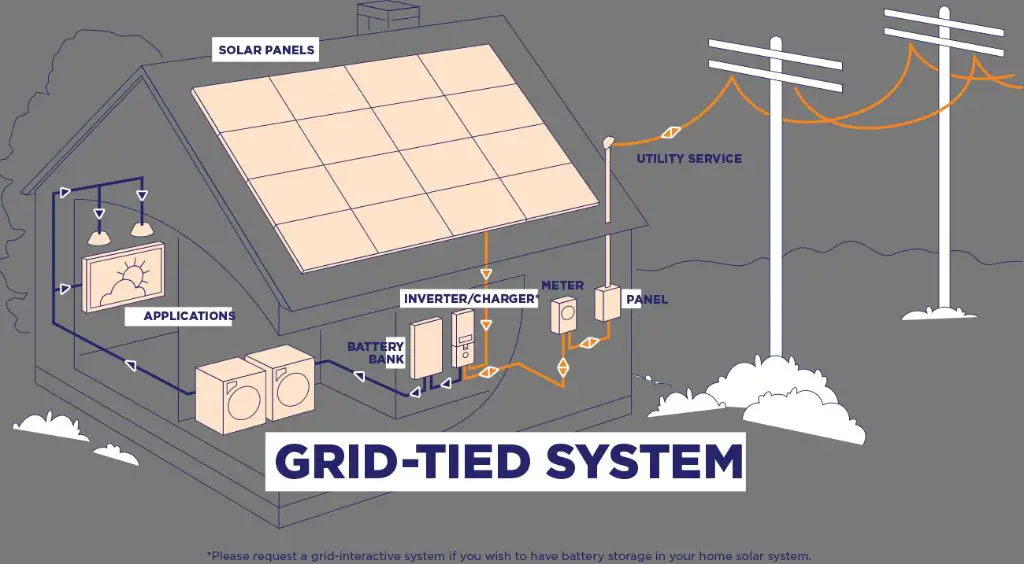
One option for powering your home is to install a grid-tied solar power system. With this type of system, solar panels are installed on your roof or ground-mounted on your property. The solar panels generate DC electricity during daylight hours, which is fed into an inverter to convert it into AC electricity compatible with your home’s electrical system and appliances.
The key aspect of a grid-tied system is that it is connected to your utility’s electric grid. During the day when your solar panels are generating more electricity than your home is using, the excess power flows back onto the grid. This is known as net metering. Your electricity meter essentially spins backwards when you’re overproducing, giving you credits for that excess energy.
At night or during periods when your solar panels aren’t generating enough to meet your home’s electricity needs, you then draw power back down from the grid. Over the course of a month or year, you only pay the utility company for your net energy use, hence the term net metering.
Grid-tied systems do not include any battery storage. The grid acts as the battery, allowing you to leverage your solar panels as efficiently as possible. Without batteries, grid-tied systems tend to be the most affordable solar option. But you do need to have a grid connection to utilize this type of system.
Compare wind power viability
To effectively harness wind power for your home’s electricity needs, you’ll need consistent, strong winds on your property. Wind turbines require an average annual wind speed of at least 9 mph to be viable. The higher your average wind speeds, the more power a turbine can generate.
Most residential wind turbines have height requirements as well. The turbine needs to be mounted on a tower tall enough to reach altitudes with the strongest, steadiest winds. As a general rule, the tower should be at least 30 feet taller than any obstacle within 500 feet.
You’ll also want to research zoning restrictions and permitting requirements for wind turbines in your area. Many neighborhoods prohibit or limit wind turbine installations. If permitted, you may need approval for the height and placement of the turbine.
Consider a site assessment to determine if your property is suitable for wind power. Factor in average wind speeds, zoning laws, obstacles, and installation and maintenance costs. For some homes, wind turbines can offset a substantial portion of electricity needs.
Consider a micro-hydropower system
If you have a stream or river on your property, you may be able to harness the kinetic energy of the flowing water to generate electricity. Micro-hydropower systems use a turbine connected to a generator to produce electricity. The amount of power that can be generated depends on the flow rate and vertical drop of the water. These systems work best with at least a 20-foot vertical drop and a minimum flow rate of 5 gallons per minute. The components of a micro-hydropower system include:
- Intake – Diverts water from the stream into a pipeline
- Pipeline – Carries water to the turbine
- Turbine and generator – Converts the water’s energy into electricity
- Controls – Regulates and monitors the system
- Inverter – Converts the generator’s AC power into usable DC electricity
Micro-hydropower systems require a reliable water source and proper site conditions, but can provide clean, renewable electricity for off-grid homes. The upfront installation costs are high, but the long-term energy savings can make it a cost-effective option. Consult with a specialist to evaluate your site and determine if micro-hydropower is feasible. Make sure to acquire all necessary permits before proceeding.
Evaluate costs and payback times
When deciding how to provide electricity to your home, it’s important to consider the costs and potential return on investment of different systems. This will help you determine which option makes the most financial sense for your situation.
For solar power systems, look at the upfront installation costs, ongoing maintenance expenses, incentives and rebates available, and projected electricity production to calculate payback period. Payback period refers to the amount of time it takes to recoup your initial investment through electricity bill savings. Many homeowners find that solar power can pay for itself within 5-10 years.
Similarly, calculate installation and maintenance costs for wind turbines or micro-hydropower systems along with available tax credits and rebates. Compare to projected electricity production over time. Wind and hydro systems often have longer payback periods, frequently 15-20 years.
Batteries can increase solar system costs substantially. Determine whether time-of-use billing, along with net metering or feed-in tariffs, could allow you to maximize savings without adding batteries. If your utility doesn’t offer these programs, estimate potential payback on a solar-plus-storage system.
Talk to installers to get accurate quotes for each system based on your site specifics. They can provide payback period estimates as well. Weigh all factors to determine the best financial decision for providing electricity to your home.
Consider battery storage
For off-grid home power systems, battery storage is essential to provide electricity when the sun isn’t shining or wind isn’t blowing. Batteries store excess electricity generated during the daytime so it can be used at night. They also provide backup power during grid outages.
Lead-acid batteries are the most common for home energy storage. They are inexpensive but heavy and require ventilation. Lithium-ion batteries are lighter, smaller, and more efficient but also more expensive. Flow batteries are an emerging technology that may become more cost-effective in the future.
When sizing your battery bank, calculate your average daily energy use and multiply it by the number of days of autonomy you want. More battery capacity equals longer backup but higher costs. 3-5 days of storage capacity is common for off-grid homes.
Proper battery maintenance is crucial for longevity. Keep batteries fully charged, prevent excessive discharge, and ensure adequate ventilation. Battery management systems can optimize performance and lifespan.
Overall, plan for battery replacement every 5-10 years. The upfront investment is significant but quality batteries are essential for reliable off-grid power.
Compare Incentives and Rebates
There are a variety of incentives and rebates available that can help reduce the upfront costs of installing renewable energy systems in your home. Two of the main types of incentives to research are federal tax credits and local utility incentives.
The federal government offers an investment tax credit (ITC) that allows you to deduct 26% of the cost of installing a residential solar system from your federal taxes. This tax credit applies to both solar photovoltaic and solar water heating systems. There are no limits to the amount you can claim, and if the credit exceeds your tax liability for the year, you can carry forward the excess amount to future tax years.
Many local utilities also offer rebates and incentives to homeowners who install renewable energy systems. These are typically structured as an upfront rebate that reduces the initial cost of purchasing the system. The availability and amounts vary significantly based on where you live, so be sure to check with your local utility company. Some utilities also offer innovative programs like community solar that can help offset costs.
Leveraging these incentives alongside the long-term energy bill savings can make the economics of installing a renewable energy system very compelling for many homeowners.
Summarize key takeaways
For most homeowners looking to generate their own electricity, rooftop solar panels are likely the best option. Solar panel costs have dropped dramatically in recent years, making them an affordable investment that can pay for itself in electricity savings over time. Grid-tied solar systems are usually the simplest option, as they connect directly to your existing electrical panel and allow excess solar power to feed to the grid.
Off-grid solar requires battery storage to provide power when the sun isn’t shining, adding to complexity and costs. Still, it provides true energy independence if you have the resources to invest upfront. Beyond solar, micro-hydropower can provide continuous renewable power if you live near a flowing water stream. But the upfront costs tend to be high. Residential wind turbines remain an uncommon option due to permitting, zoning,costs and low power output.
No matter what renewable energy system you choose, be sure to explore incentives like federal and state tax credits that can cut costs by thousands. With the right home and resources, generating your own electricity is within reach.

